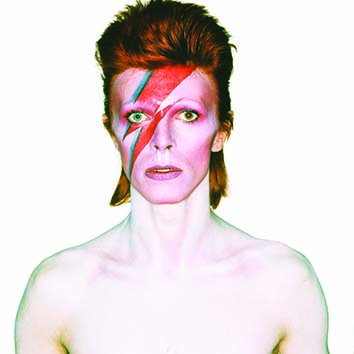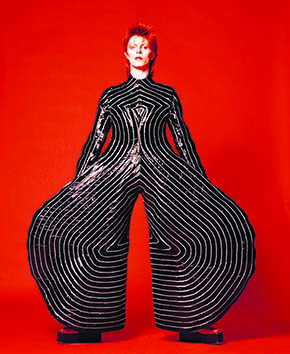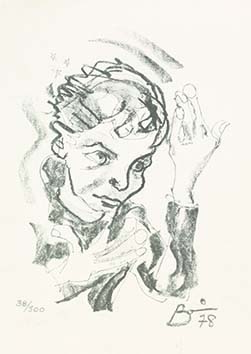London has braced itself for the exhibition of the century
By Daniela Bonetto
 More than 300 objects have been brought together for the very first time and include handwritten lyrics, original costumes, fashion, photography, film, music videos, set designs, Bowie’s own instruments and album artwork. It offers insight into Bowie’s first steps towards musical success, tracing the creative aspirations of the young David Robert Jones (born 1947 in Brixton, London). It shows how and by what he was inspired in the youth culture of Britain. Pursuing a professional career in music and acting, he officially adopted the stage name ‘David Bowie’ in 1965 and went through a series of self-styled changes from Mod to mime artist and folk singer to R&B musician in anticipation of the shifting nature of his later career.
More than 300 objects have been brought together for the very first time and include handwritten lyrics, original costumes, fashion, photography, film, music videos, set designs, Bowie’s own instruments and album artwork. It offers insight into Bowie’s first steps towards musical success, tracing the creative aspirations of the young David Robert Jones (born 1947 in Brixton, London). It shows how and by what he was inspired in the youth culture of Britain. Pursuing a professional career in music and acting, he officially adopted the stage name ‘David Bowie’ in 1965 and went through a series of self-styled changes from Mod to mime artist and folk singer to R&B musician in anticipation of the shifting nature of his later career.
 The exhibition, in collaboration with Gucci, explores the broad range of Bowie’s collaborations with artists and designers in the fields of fashion, sound, graphics, theatre, art and film. On display are more than 60 stage-costumes including Ziggy Stardust bodysuits (1972) designed by Freddie Burretti, Kansai Yamamoto’s flamboyant creations for the Aladdin Sane tour (1973) and the Union Jack coat designed by Bowie and Alexander McQueen for the Earthling album cover (1997). Frida Giannini, Gucci Creative Director, said: “David Bowie is… one of my greatest inspirations. His individuality, originality and authenticity have been defining. Through his creative genius his influence on music, fashion, art and popular culture over decades has been immeasurable and will continue to be for decades to come.”
The exhibition, in collaboration with Gucci, explores the broad range of Bowie’s collaborations with artists and designers in the fields of fashion, sound, graphics, theatre, art and film. On display are more than 60 stage-costumes including Ziggy Stardust bodysuits (1972) designed by Freddie Burretti, Kansai Yamamoto’s flamboyant creations for the Aladdin Sane tour (1973) and the Union Jack coat designed by Bowie and Alexander McQueen for the Earthling album cover (1997). Frida Giannini, Gucci Creative Director, said: “David Bowie is… one of my greatest inspirations. His individuality, originality and authenticity have been defining. Through his creative genius his influence on music, fashion, art and popular culture over decades has been immeasurable and will continue to be for decades to come.”
 David Bowie is chronicles his innovative approach to creating albums and touring shows around fictionalised stage personas and narratives. 1972 marked the birth of his most famous creation; Ziggy Stardust, a human manifestation of an alien being. Ziggy’s daringly androgynous and otherworldly appearance has had a powerful and continuous influence on pop culture, signalling a challenge of social traditions and inspiring people to shape their own identities. On display is the original multi-coloured suit worn for the pivotal performance of Starman on Top of the Pops in July 1972, as well as outfits designed for stage characters Aladdin Sane and The Thin White Duke. Costumes from The 1980 Floor Show (1973), album cover sleeves for The Man Who Sold the World (1970) and Hunky Dory (1971), alongside press cuttings and fan material, highlight Bowie’s fluid stylistic transformations and his impact on social mobility and gay liberation.
David Bowie is chronicles his innovative approach to creating albums and touring shows around fictionalised stage personas and narratives. 1972 marked the birth of his most famous creation; Ziggy Stardust, a human manifestation of an alien being. Ziggy’s daringly androgynous and otherworldly appearance has had a powerful and continuous influence on pop culture, signalling a challenge of social traditions and inspiring people to shape their own identities. On display is the original multi-coloured suit worn for the pivotal performance of Starman on Top of the Pops in July 1972, as well as outfits designed for stage characters Aladdin Sane and The Thin White Duke. Costumes from The 1980 Floor Show (1973), album cover sleeves for The Man Who Sold the World (1970) and Hunky Dory (1971), alongside press cuttings and fan material, highlight Bowie’s fluid stylistic transformations and his impact on social mobility and gay liberation.
David Bowie is concludes with a display of striking performance and fashion photography taken by photographers including Helmut Newton, Herb Ritts and John Rowlands. These professional portraits are juxtaposed with a collage of visual projections illustrating Bowie’s immense creative influence and ubiquitous presence in music, fashion and contemporary visual and virtual culture.
until 11 August 2013
vam.ac.uk



